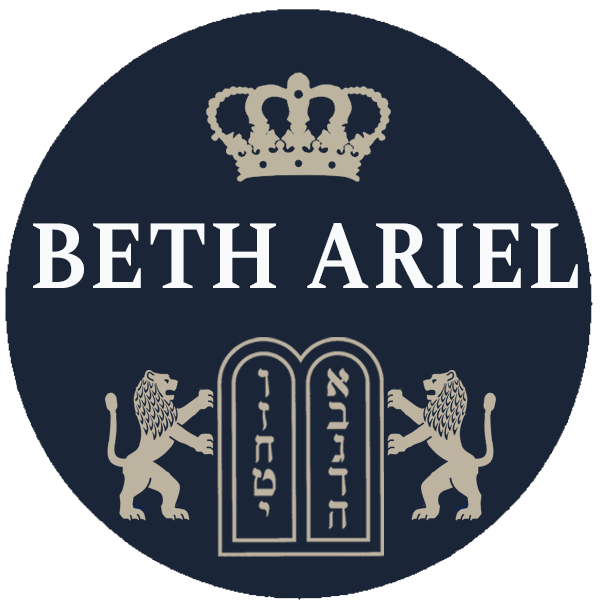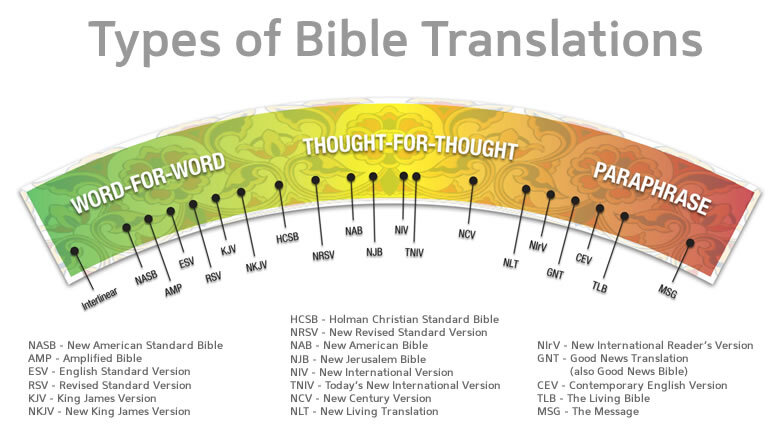Where did my English Bible come from?
The King James Bible (KJV) is based on a compilation comprised of 6 manuscripts from the 10th century. Other Bibles are based on the (KJV) plus a compilation of 5,000 manuscripts, the Dead Sea Scroll, and the Septuagint. The “basis” of your Bible doesn’t determine the ENGLISH words which appear in your Bible. The English words are determined by the translators. The translators are usually a committee of biblical scholars who come together to “communicate” the Hebrew, Greek, and Aramaic into English we can understand. These scholars bring the various skills necessary to understand and translate ancient languages.
Over time because our English vocabulary has and continues to change, more and more English Bibles are coming out. Each one promoting their Bible is better in some fashion.
What about my Bible, how does it rate?
Bibles come in one of three basic types. And many combinations in between
Over-simplified Bibles - Also known as Paraphrase Bibles. A bible put in your own words so that it appears to make total sense.
Thought for Thought Bibles - These Bibles try to capture the same meaning as the original authors had intended. Focusing more on the sentences than word for word.
Word for Word Bibles - These Bibles attempt to leave the words as much as possible in their original sentence structure. These Bible sometimes have English sentence wording which can be hard to read and understand.
Study Bibles?
A Bible with added features, such as Maps, Character Summaries, Explanatory Footnotes, Concordance, Lists, Charts, and Commentaries.
Messianic Bibles?
These bibles are usually created by an individual or committee, who have basically taken one of the standard bibles, and changed words back to the original Hebrew, transliterating them into English. The most obvious one is Jesus translated as Yeshua, or God as Adonai. Messianic Bibles are not necessarily better. What these bibles do differently is
The Divine or sacred name of God is changed to Adonai
Personal Names of people throughout the entire Bible are in Hebrew
Books of the Hebrew Scriptures are in the order of the Tanak, and some use the Hebrew Titles for the books.
Other Elements such as Cities and Towns. Also, a lot of common usage words are left in their Hebrew, just transliterated in English pronunciations.
These are the popular Messianic Bibles
Complete Jewish Bible (CJB) - Individual update by David Stern
Tree of Life (TLV) - Committee-based translation from source texts
New Jerusalem Version (NJV) - based on the (ASV)
The Scriptures (TS2009) - Individual update of Dr. C.J. Koster
* If you are interested in adding one of these Bible to your library of usage. We would recommend the TLV. It is the version will give out to those in need of a Bible.
What are the most common Bibles in use today?
King James Bibles (KJV) 1611 (NKJV) 1982
Standard Bibles
- Revised Standard Bible (RSV) 1885
- American Standard Bible (ASV) 1901
- New Revised Standard (NRSV) 1989
- New American Standard Bible (NASB) 1971
Modern Bibles
New International Version (NIV) 1978
English Standard Version (ESV) 2001
What about all the other Bibles I’ve heard about?
The rest of the Bibles are in one fashion or another attempts to reword the Hebrew & Greek so that they can be better understood. The question is how much re-wording is taking place, and the credentials of those making the changes. Are they translating or interpreting? Do your homework.

